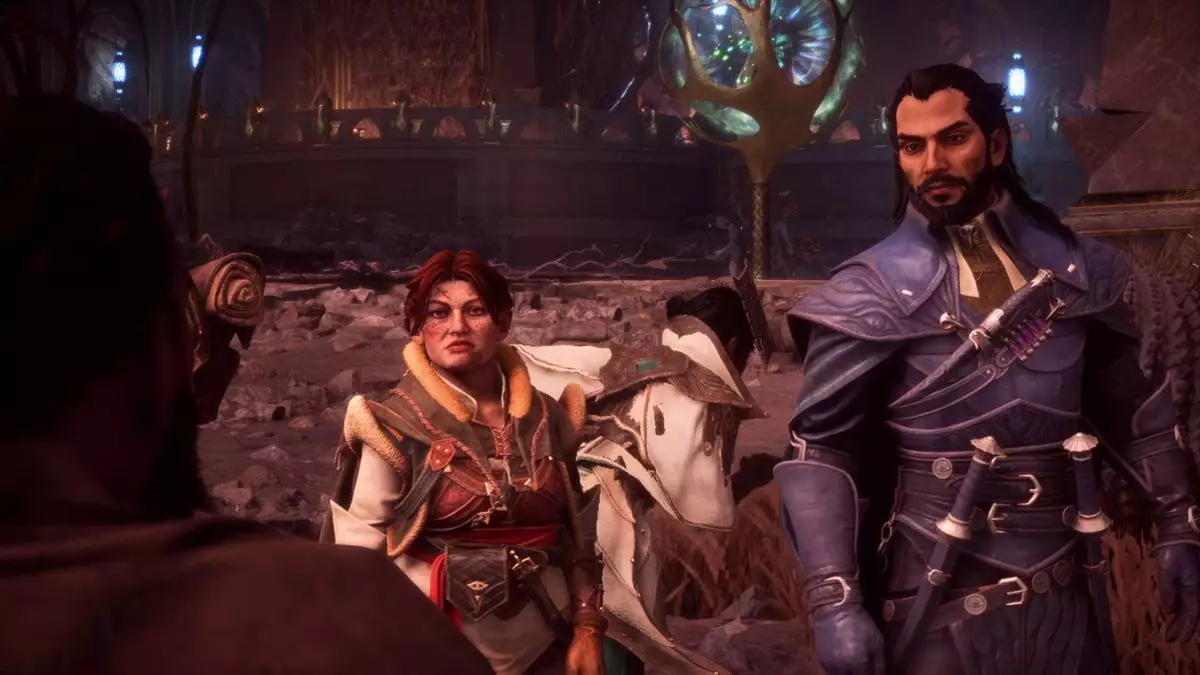In the rich tapestry of storytelling that constitutes the Dragon Age universe, decisions often loom large, influencing not only immediate circumstances but also the long-term trajectory of gameplay and character development. In Dragon Age: Veilguard, a profound dilemma arises regarding two pivotal cities – Minrathous and Treviso. Players are thrust into a considerable moral quandary where they must decide which city to aid against a dire threat, namely the Blight Dragons orchestrated by the elusive Ghilan’nain. This article dissects the implications of the Minrathous versus Treviso decision and the broader context of choice in the Dragon Age series.
The choice between assisting Minrathous or Treviso is presented without forewarning, forcing players to navigate a complex emotional landscape with minimal information. As players grapple with their allegiance, they must reckon with the fact that neither outcome promises a happy resolution. Supporting Minrathous means significantly impacting the fate of Lucanis and the Antivan Crows – a duo essential to the lore and dynamics within this gaming chapter. Conversely, siding with Treviso creates a ripple effect of suffering for Neve and the Shadow Dragons, as both factions bear the brunt of this pivotal moment.
This lack of clear-cut advantages complicates the decision-making process. Players who prioritize the nuances of narrative and relationship dynamics may find themselves in a bind, as every path taken leads to inevitable complications, failing side quests, and potential losses not just in plotlines but also in character relationships. The narrative’s construction amplifies the player’s stakes, increasing the emotional weight behind their choices.
With the shadow of doom looming over both cities, the outcomes hinge on the chosen path. If Minrathous is defended, players engage in a battle with a Blight Dragon, only to see it divert to Treviso under Ghilan’nain’s influence. Although this confrontation saves Minrathous from further immediate danger, Treviso suffers as a result, leading to an avalanche of failed quests and the disappearance of the Antivan Crows merchant. Lucanis, while surviving, becomes less accessible for players who pursue romantic connections, a potential regret for those investing emotionally in the character arcs.
On the flip side, opting to save Treviso initiates a similar chain of events. The Blight Dragon’s attack cascades catastrophically onto Minrathous, leading to its fall and the same failed quests in that city. The narrative here poignantly illustrates the ‘choose your poison’ essence of storytelling in Dragon Age: Veilguard. While saving one city seems noble, it is the inherent destruction of another that creates a haunting atmosphere of loss and regret.
The Weight of Side Quests and Character Relationships
One of the notable aspects of this decision is how it restructures existing gameplay through the automatic failure of side quests tied to the city not chosen. In a franchise that emphasizes the interconnectedness of side quests and the main storyline, this design choice serves as a vivid reminder of the continuity of consequence in Dragon Age narratives. A player might find themselves unwittingly locked out from exploring essential character arcs or obtaining valuable loot, reinforcing that no heroic act comes without its price.
Moreover, the emotional investment players have nurtured toward Lucanis and Neve adds further complexity. Those who have entrenched themselves in the campaign’s romantic potential might find that their choices severely restrict options, thereby amplifying the stakes. This can lead to a sense of frustration, particularly for players who wish to navigate the intricate tapestry of relations and alliances that define Dragon Age’s storytelling.
Given the pressures surrounding the choice between Minrathous and Treviso, many players may adopt a cautious strategy; reloading saved games to explore alternative outcomes. While this presents a route to mitigate feelings of regret, it also jaggedly interrupts the immersive flow of the game’s storytelling. The game mechanics around reloading highlight a core tension in gaming narratives: the desire to experience every facet of the story against the natural consequences of decisions made.
Ultimately, the decision between aiding Minrathous or Treviso encapsulates the broader themes of choice, consequence, and emotional investment prevalent in the Dragon Age franchise. No matter the path chosen, the results resonate deeply within the narrative, reinforcing the thrill and weight of player agency. As the characters navigate their own destinies amid the heat of battle and shifting alliances, players are left to ponder not just the immediate fallout of their decisions, but the far-reaching implications of a world shaped by the choices they make. In the dire landscape of Dragon Age: Veilguard, every reversal of fate carries shadows of its past, urging players to contemplate what truly defines the hero’s journey.

